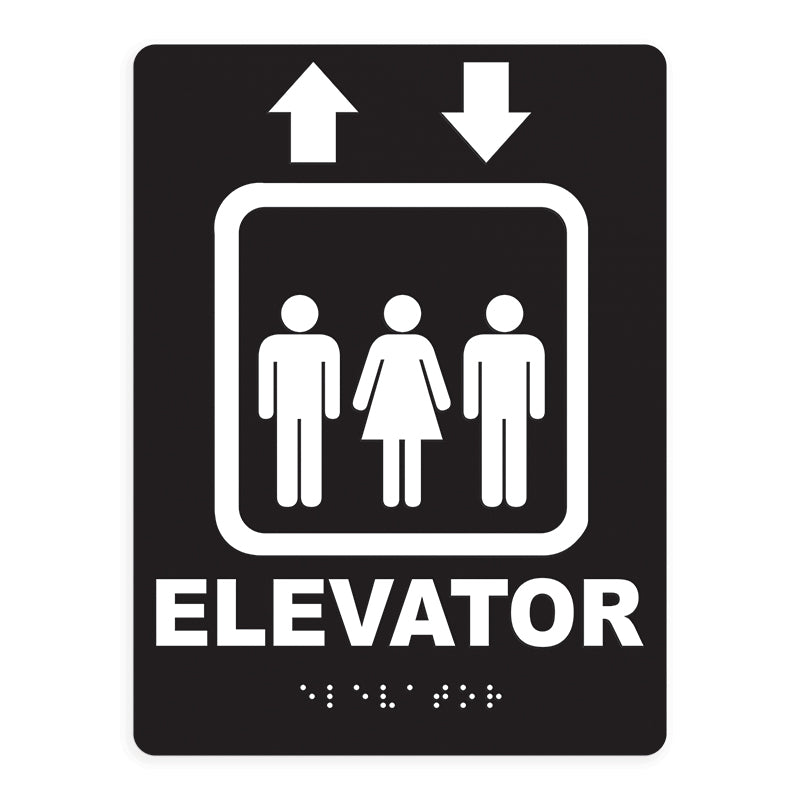The Function of ADA Signs in Complying with Accessibility Standards
The Function of ADA Signs in Complying with Accessibility Standards
Blog Article
Discovering the Secret Attributes of ADA Indicators for Boosted Ease Of Access
In the world of access, ADA signs serve as silent yet effective allies, ensuring that areas are inclusive and navigable for individuals with handicaps. By incorporating Braille and tactile elements, these signs damage barriers for the aesthetically damaged, while high-contrast color schemes and understandable fonts accommodate diverse aesthetic requirements. Their calculated placement is not arbitrary however rather a calculated initiative to help with seamless navigation. Past these features exists a deeper narrative concerning the evolution of inclusivity and the continuous dedication to producing fair rooms. What more could these indicators represent in our pursuit of global ease of access?
Value of ADA Compliance
Ensuring compliance with the Americans with Disabilities Act (ADA) is essential for cultivating inclusivity and equal gain access to in public spaces and work environments. The ADA, passed in 1990, mandates that all public centers, employers, and transport services accommodate people with handicaps, ensuring they delight in the very same rights and opportunities as others. Conformity with ADA requirements not just meets lawful responsibilities however also enhances a company's online reputation by demonstrating its dedication to diversity and inclusivity.
Among the crucial elements of ADA compliance is the implementation of obtainable signage. ADA indications are developed to ensure that individuals with specials needs can conveniently navigate via buildings and areas. These indicators should stick to certain standards regarding dimension, typeface, shade contrast, and positioning to ensure presence and readability for all. Properly implemented ADA signage helps eliminate barriers that individuals with disabilities often run into, consequently advertising their freedom and confidence (ADA Signs).
Furthermore, adhering to ADA guidelines can alleviate the risk of prospective fines and lawful repercussions. Organizations that stop working to adhere to ADA standards may encounter penalties or claims, which can be both economically challenging and destructive to their public picture. Thus, ADA compliance is indispensable to fostering an equitable environment for everybody.
Braille and Tactile Elements
The unification of Braille and responsive aspects into ADA signage personifies the principles of ease of access and inclusivity. These features are vital for people that are blind or visually impaired, allowing them to browse public spaces with higher independence and self-confidence. Braille, a responsive writing system, is essential in providing created info in a style that can be easily perceived via touch. It is typically put under the matching message on signs to guarantee that people can access the information without aesthetic aid.
Tactile components extend beyond Braille and include raised symbols and characters. These elements are created to be noticeable by touch, permitting people to identify area numbers, restrooms, departures, and various other vital areas. The ADA establishes particular guidelines pertaining to the dimension, spacing, and positioning of these responsive aspects to optimize readability and make sure uniformity across various settings.

High-Contrast Shade Schemes
High-contrast color schemes play a pivotal function in boosting the visibility and readability of ADA signs for individuals with aesthetic impairments. These plans are necessary as they maximize the distinction in light reflectance in between text and history, ensuring that indications are easily noticeable, also from a range. The Americans with Disabilities Act (ADA) mandates making use of particular color contrasts to suit those with restricted vision, making it a vital aspect of conformity.
The efficacy of high-contrast colors lies in their capacity useful source to attract attention in different lights conditions, consisting of poorly lit environments and locations with glow. Commonly, dark text on a light background or light message on a dark background is utilized to achieve optimal comparison. Black text on a white or yellow history gives a stark aesthetic distinction that helps in fast recognition and comprehension.

Legible Fonts and Text Dimension
When thinking about the style of ADA signage, the option of readable typefaces and proper message dimension can not be overemphasized. The Americans with Disabilities Act (ADA) mandates that font styles have to be sans-serif and not italic, oblique, script, extremely ornamental, or of unusual form.
The size of the text additionally plays a critical function in availability. According to ADA standards, the minimum text height must be 5/8 inch, and it must raise proportionally with watching range. This is particularly vital in public spaces where signage demands to be reviewed promptly and precisely. Uniformity in message dimension adds to a natural aesthetic experience, aiding individuals in browsing atmospheres efficiently.
Moreover, spacing in between letters and lines is integral to readability. Ample spacing stops characters from appearing crowded, improving readability. By sticking to these standards, designers can substantially improve accessibility, making sure that signage serves its desired purpose for all individuals, no matter of their aesthetic capabilities.
Efficient Positioning Techniques
Strategic positioning of ADA signage is necessary for maximizing accessibility and guaranteeing conformity with legal requirements. Effectively located indicators direct people with specials needs efficiently, promoting navigating in public rooms. Key factors to consider include elevation, closeness, and visibility. ADA standards stipulate that signs ought to be installed at an elevation in between 48 to 60 inches from the ground to guarantee they are within the line of view for both standing and seated people. This standard height range is crucial for inclusivity, allowing wheelchair users and people of differing heights to access info effortlessly.
Additionally, signs should be placed nearby to the lock side of doors to permit easy recognition prior to access. Consistency in indication positioning throughout a facility enhances predictability, lowering complication and boosting general user experience.

Verdict
ADA indications play a crucial role in advertising access by integrating functions that resolve the needs of people with impairments. These components collectively cultivate his explanation an inclusive setting, highlighting the significance of ADA compliance in making certain equivalent accessibility for all.
In the realm of accessibility, ADA signs offer as silent yet effective allies, making sure that areas are accessible and comprehensive for individuals with handicaps. The ADA, established in 1990, mandates that all public centers, employers, and transport solutions suit people with handicaps, guaranteeing they enjoy the same civil liberties and chances as others. ADA Signs. ADA indications are made to ensure that people with disabilities can quickly navigate through areas and buildings. ADA guidelines specify that signs need to be installed at a height in between 48 to 60 inches from the ground to guarantee they are within the line of view for both standing and seated individuals.ADA indicators play an important function in promoting access this link by integrating attributes that attend to the needs of individuals with impairments
Report this page